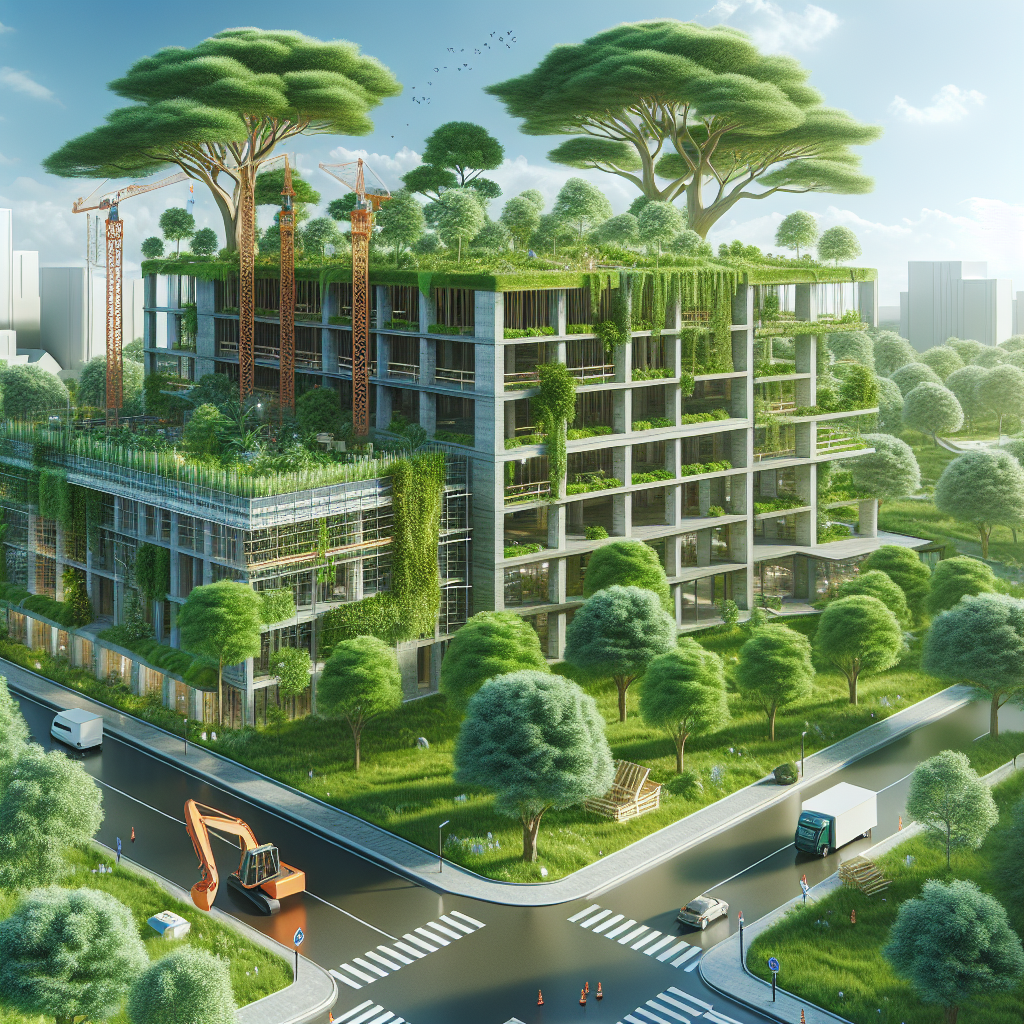Green Building: Constructing a Future with Lower Carbon Footprints
In an era where climate change is not just a looming threat but a palpable reality, the construction industry is undergoing a transformative shift. This shift is not just in materials or methods, but in the very philosophy of what it means to build. Green building, at its core, represents this shift, aiming to reduce the environmental impact of buildings through sustainable design, construction, and operation. It’s about constructing a future where our shelters harmonize with the environment, rather than dominate it.
The Pillars of Green Building
Green building rests on several foundational principles, including energy efficiency, water conservation, reducing carbon footprints, improving indoor air quality, and material sustainability. Each of these principles contributes to the overarching goal of minimizing environmental impact and promoting a healthier, more sustainable future.
Energy Efficiency
One of the most significant aspects of green building is energy efficiency. This involves designing buildings that can maintain their internal temperature, thereby reducing the need for heating and cooling. This can be achieved through better insulation, energy-efficient windows, and the use of renewable energy sources such as solar panels. Not only does this reduce the building’s carbon footprint, but it also leads to significant cost savings over time.
Water Conservation
Water conservation is another critical aspect of green building. This involves the use of fixtures that reduce water use, the implementation of rainwater harvesting systems, and the recycling of greywater for non-potable uses such as irrigation and toilet flushing. By minimizing water usage, green buildings help preserve our most precious resource and reduce the strain on municipal water systems.
Reducing Carbon Footprints
Reducing the carbon footprint of buildings is central to the green building philosophy. This is achieved not only through energy efficiency and the use of renewable energy but also through the selection of materials and construction practices. Using locally sourced, sustainable materials and minimizing waste during construction are key strategies in reducing a building’s carbon footprint.
Improving Indoor Air Quality
Indoor air quality is a significant concern in traditional buildings, where off-gassing from materials can lead to health issues. Green buildings prioritize the use of non-toxic, low-emitting materials to improve indoor air quality. Additionally, the design of green buildings often incorporates increased ventilation and natural light, further contributing to a healthier indoor environment.
Material Sustainability
The choice of materials plays a crucial role in green building. Sustainable materials are those that are recycled, renewable, or sourced in a way that minimizes environmental impact. This not only includes the materials used in the construction itself but also those used in the interior, such as paints, carpets, and furnishings.
The Benefits of Green Building
The benefits of green building extend beyond environmental conservation. They include reduced operating costs, improved occupant health and productivity, and a positive impact on the local community. Furthermore, green buildings often have higher property values and can serve as a tangible representation of an organization’s commitment to sustainability.
The Future of Green Building
As we move forward, the importance of green building will only continue to grow. Innovations in technology and materials, along with increasing regulatory support, are making green building more accessible and affordable. Moreover, as public awareness of environmental issues grows, the demand for sustainable construction is expected to rise.
FAQs on Green Building
What is the most important feature of a green building?
The most important feature of a green building is its reduced environmental impact, achieved through energy efficiency, water conservation, sustainable material use, and improved indoor environmental quality.
Are green buildings more expensive?
The initial cost of green buildings can be higher due to the use of specialized materials and technologies. However, the long-term savings in energy and water costs, as well as the potential for increased property values, often offset these initial investments.
How does green building contribute to health?
Green buildings contribute to health through improved indoor air quality, increased natural light, and the use of non-toxic materials, which can reduce the incidence of respiratory issues and improve overall well-being.
Can an existing building be made green?
Yes, an existing building can be retrofitted to become more sustainable. This can involve upgrading to energy-efficient systems, installing water-conserving fixtures, and using sustainable materials in renovations.
How do green buildings save water?
Green buildings save water through the use of low-flow fixtures, efficient irrigation systems, rainwater harvesting, and the recycling of greywater for non-potable uses.
Are green buildings energy-efficient?
Yes, energy efficiency is a cornerstone of green building. This is achieved through the use of energy-efficient appliances, improved insulation, passive solar design, and, in many cases, renewable energy sources.
As we look towards the future, it’s clear that green building is not just a trend but a necessary evolution in how we think about and construct the spaces we live and work in. By embracing green building practices, we can construct a future with lower carbon footprints, healthier living environments, and a more sustainable relationship with our planet.

